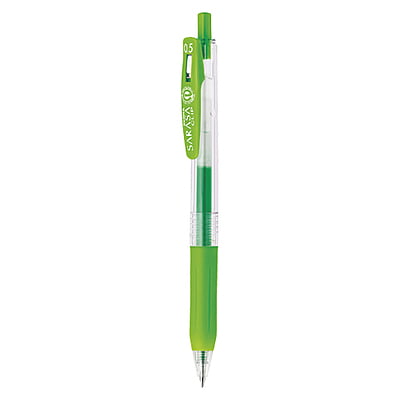Journal Diary Ideas

20 Journal Diary Ideas for Inspired Writing
In the realm of creative expression and self-discovery, journaling stands as a timeless tool for unlocking the depths of our imagination and understanding. At its core, journaling is not merely about jotting down daily events but rather a journey of exploration, introspection, and inspiration. Whether you're an avid writer seeking fresh perspectives or someone embarking on their first journaling adventure, the key to unlocking your creativity lies in embracing diverse journal diary ideas.
Why Journal Diary Ideas Matter
In the fast-paced hustle of everyday life, it's easy to fall into the trap of monotony, where each journal entry resembles the last. Yet, it's precisely in moments of divergence from the norm that our creativity thrives. Creative journaling isn't just about documenting the mundane; it's about infusing every page with vitality, imagination, and emotion. By embracing a plethora of diary inspiration and bullet journal ideas, we invite the unexpected, the extraordinary, and the transformative into our lives.
In this article, we'll explore fifteen captivating journal diary ideas designed to ignite your artistic flair, elevate your writing prowess, and rejuvenate your spirit. From the simplicity of morning pages to the intricacies of visual journaling, each idea offers a unique portal into the vast landscapes of your inner world. So, grab your favourite pen, open a fresh notebook, and let's embark on a journey of creative discovery together.
20 Inspiring Journal Diary Ideas
1. Morning Pages:
Begin your day with a burst of creativity by dedicating the first moments of your morning to morning pages. Write without inhibition, allowing your thoughts to flow freely onto the page in an unfiltered stream of consciousness. This practice not only clears your mind but also sets a tone of openness and creativity for the rest of the day.
2. Gratitude Journaling:
Cultivate a mindset of appreciation and abundance by incorporating gratitude journaling into your daily routine. Each day, take a moment to reflect on three things you are grateful for. Whether it's a kind gesture from a friend, a beautiful sunset, or a delicious meal, expressing gratitude helps shift your focus towards positivity and contentment.
3. Stream of Consciousness Writing:
Set aside a dedicated time each day for stream-of-consciousness writing. Without pausing to edit or censor yourself, let your thoughts flow freely onto the page. This exercise can lead to surprising insights and revelations, as it allows you to tap into the depths of your subconscious mind.
4. Visual Journaling:
Explore your artistic side by incorporating visual elements into your journal entries. Experiment with drawing, painting, collage-making, or even photography to complement your written reflections. Visual journaling adds a dynamic dimension to your creative expression and allows you to communicate in ways that words alone cannot convey.
5. Letter Writing:
Use your journal as a space to write letters to yourself, loved ones, or even fictional characters. Pour your heart out onto the page, expressing your deepest emotions, desires, and fears. Writing letters can be a therapeutic practice that helps you gain clarity, process emotions, and strengthen connections with others.
6. Dream Journaling:
Keep a dedicated journal by your bedside to capture the vivid imagery and fleeting sensations of your dreams. Upon waking, take a few moments to jot down any memories or impressions from your dreams. Over time, you may start to notice recurring themes or symbols that provide insight into your subconscious mind.
7. Travel Journaling:
Document your adventures and experiences while traveling by keeping a travel journal. Record the sights, sounds, smells, and emotions you encounter along the way. Include photos, ticket stubs, and other mementos to create a rich and immersive record of your journeys.
8. Prompt-Based Journaling:
Overcome writer's block and stimulate your creativity by using prompts to inspire your journal entries. You can find prompts online, in books, or create your own. Whether it's a thought-provoking question, a writing exercise, or a creative challenge, prompts can help spark new ideas and perspectives.
9. Mind Mapping:
Visualize your thoughts, ideas, and associations using mind maps. Start with a central theme or concept and branch out with related thoughts and connections. Mind mapping is a powerful tool for brainstorming, organizing information, and gaining insights into complex topics.
10. Lists and Bullet Points:
Organize your thoughts, goals, and tasks using lists and bullet points. Create to-do lists, bucket lists, or lists of things you want to learn or experience. Bullet points are a concise and effective way to capture ideas and keep track of important information.
11. Dialogue Journaling:
Explore different perspectives and voices by engaging in dialogue within your journal. Write conversations between yourself and others, fictional characters, or even different aspects of your own personality. Dialogue journaling can help you gain clarity, resolve conflicts, and explore alternative viewpoints.
12. Nature Journaling:
Connect with the natural world by keeping a nature journal. Take your journal outdoors and observe the plants, animals, and landscapes around you. Sketch or write descriptions of what you see, hear, smell, and feel. Nature journaling can foster a sense of awe, wonder, and appreciation for the world around you.
13. Memory Lane:
Reflect on past experiences, memories, and milestones by taking a stroll down memory lane in your journal. Write about significant events, lessons learned, and moments of growth. Reflecting on the past can provide insights into your values, beliefs, and identity.
14. Emotion Wheel:
Explore the complexity of human emotions by using an emotion wheel to identify and express your feelings. Take a moment to check in with yourself and identify the emotions you are experiencing. Then, use the emotion wheel as a guide to explore the nuances and shades of each emotion.
15. Collaborative Journaling:
Share your journal with a friend, partner, or family member and engage in collaborative journaling. Take turns writing entries, responding to each other's thoughts, and sharing reflections. Collaborative journaling can deepen your connections with others and provide support and encouragement along your journey.
16. Gratitude Collage:
Create a visual representation of gratitude by making a gratitude collage in your journal. Collect images, quotes, and symbols that evoke feelings of gratitude and appreciation. Arrange them creatively on the page to create a collage that serves as a visual reminder of the blessings in your life.
17. Character Interviews:
Dive deeper into the characters of your stories, novels, or even your own life by conducting character interviews in your journal. Imagine yourself as a journalist interviewing your characters, asking them probing questions about their backgrounds, motivations, and desires. Character interviews can help you develop more fully rounded and complex characters in your writing.
18. Soundtrack of My Life:
Create a soundtrack of your life by compiling a playlist of songs that hold special significance to you. Write about the memories, emotions, and experiences associated with each song. Listening to your soundtrack can evoke nostalgia, inspire creativity, and help you connect with your past self.
19. Sensory Snapshot:
Practice mindfulness and sensory awareness by taking a sensory snapshot in your journal. Close your eyes and focus on your surroundings, using all your senses to observe the sights, sounds, smells, tastes, and textures around you. Write a descriptive passage that captures the essence of the moment in vivid detail.
20. Future Self Letters:
Write letters to your future self, expressing your hopes, dreams, and aspirations for the years ahead. Seal the letters in envelopes and tuck them away in your journal to be opened and read at a later date. Writing to your future self can provide motivation, direction, and insight as you navigate your journey through life.
Tips for Effective Journal Diary Writing
- Set Aside Dedicated Time: Carve out a sacred space in your day for journaling, free from distractions and interruptions.
- Experiment with Different Formats: Explore various journaling formats, from traditional pen and paper to digital platforms and multimedia expressions.
- Embrace Imperfection: Release the pressure of perfection and embrace the messiness of the creative process. Allow yourself to make mistakes and learn from them along the way.
Conclusion: Embracing Creativity in Journaling
In the tapestry of life, our journals serve as both mirrors and windows, reflecting our innermost thoughts and opening doors to new worlds of possibility. By embracing a diverse array of journal diary ideas, we invite wonder, curiosity, and inspiration into our lives. So, let your journal be a sanctuary for your soul, a canvas for your creativity, and a compass for your journey of self-discovery. Happy journaling!
FAQs
Q1: How do I overcome writer's block when journaling?
A: Experiment with different prompts, such as "What if?" scenarios or gratitude reflections, to spark inspiration and reignite your creativity.
Q2: Can I combine multiple journal diary ideas in one entry?
A: Absolutely! Mix and match ideas like visual journaling with stream-of-consciousness writing to create unique and dynamic journal entries.
Q3: What if I'm not artistic? Can I still benefit from visual journaling?
A: Visual journaling isn't about artistic prowess; it's about self-expression. Embrace doodles, stick figures, and simple sketches to add depth and meaning to your entries.
Q4: How can I make journaling a habit in my busy schedule?
A: Start small by dedicating just five minutes a day to journaling. Gradually increase the time as it becomes a natural part of your routine.
Q5: I'm afraid someone will read my journal. Any privacy tips?
A: Consider using a lockable journal or keeping your journal in a secure location. You can also write in code or disguise your entries to maintain privacy.







